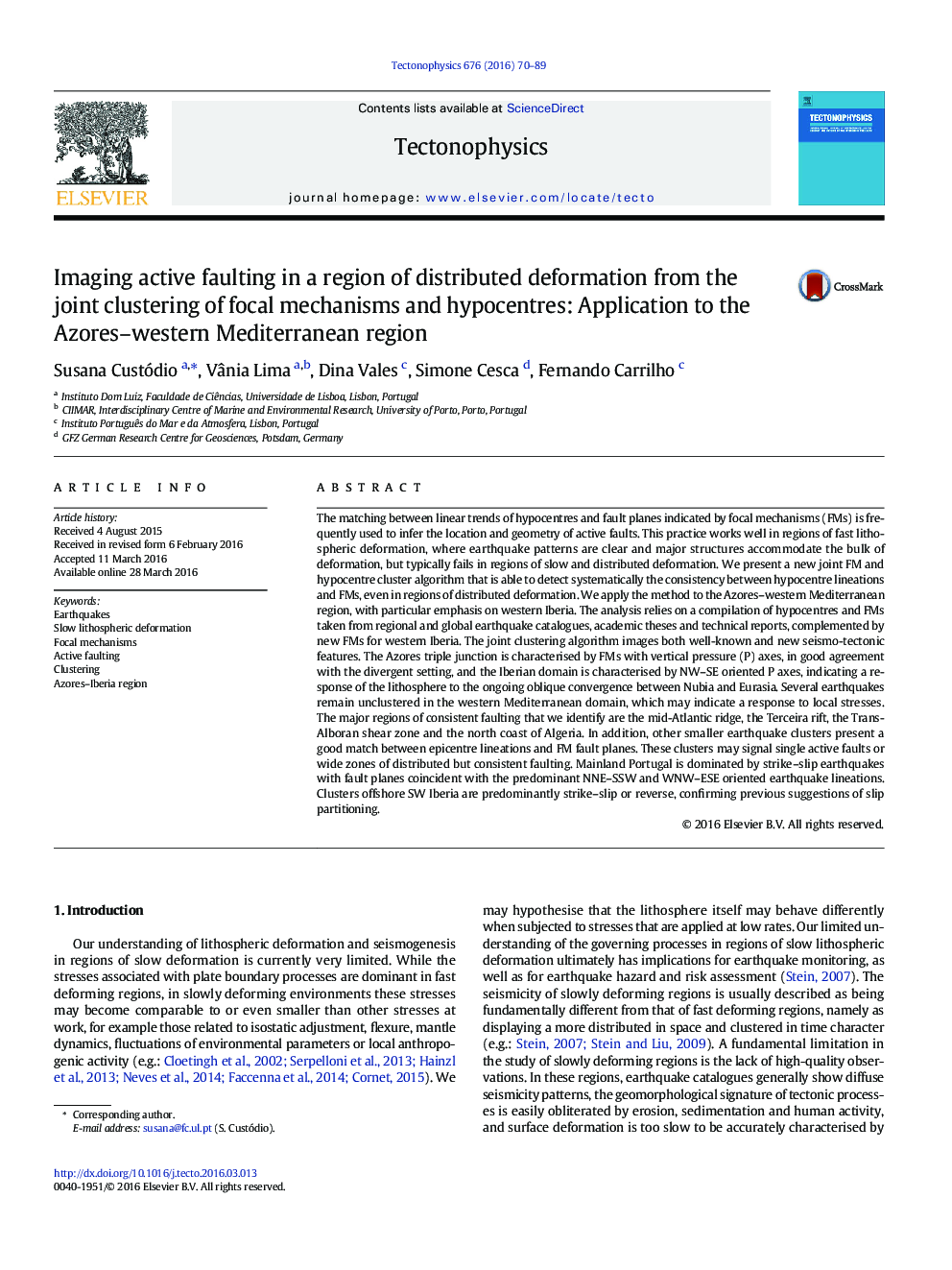| کد مقاله | کد نشریه | سال انتشار | مقاله انگلیسی | نسخه تمام متن |
|---|---|---|---|---|
| 6433408 | 1636721 | 2016 | 20 صفحه PDF | دانلود رایگان |
- We develop a new joint focal mechanism and hypocentre clustering algorithm.
- We identify regions of localisation and consistency of faulting in the Azores-Iberia region.
- Major regions of consistent faulting are the mid-Atlantic ridge, Terceira rift, Trans-Alboran shear zone and north Algeria.
- Mainland Portugal is dominated strike-slip earthquakes with fault planes oriented parallel to epicentral lineations.
- The region offshore south Portugal is dominated by strike-slip and reverse faulting.
The matching between linear trends of hypocentres and fault planes indicated by focal mechanisms (FMs) is frequently used to infer the location and geometry of active faults. This practice works well in regions of fast lithospheric deformation, where earthquake patterns are clear and major structures accommodate the bulk of deformation, but typically fails in regions of slow and distributed deformation. We present a new joint FM and hypocentre cluster algorithm that is able to detect systematically the consistency between hypocentre lineations and FMs, even in regions of distributed deformation. We apply the method to the Azores-western Mediterranean region, with particular emphasis on western Iberia. The analysis relies on a compilation of hypocentres and FMs taken from regional and global earthquake catalogues, academic theses and technical reports, complemented by new FMs for western Iberia. The joint clustering algorithm images both well-known and new seismo-tectonic features. The Azores triple junction is characterised by FMs with vertical pressure (P) axes, in good agreement with the divergent setting, and the Iberian domain is characterised by NW-SE oriented P axes, indicating a response of the lithosphere to the ongoing oblique convergence between Nubia and Eurasia. Several earthquakes remain unclustered in the western Mediterranean domain, which may indicate a response to local stresses. The major regions of consistent faulting that we identify are the mid-Atlantic ridge, the Terceira rift, the Trans-Alboran shear zone and the north coast of Algeria. In addition, other smaller earthquake clusters present a good match between epicentre lineations and FM fault planes. These clusters may signal single active faults or wide zones of distributed but consistent faulting. Mainland Portugal is dominated by strike-slip earthquakes with fault planes coincident with the predominant NNE-SSW and WNW-ESE oriented earthquake lineations. Clusters offshore SW Iberia are predominantly strike-slip or reverse, confirming previous suggestions of slip partitioning.
511
Journal: Tectonophysics - Volume 676, 26 April 2016, Pages 70-89
